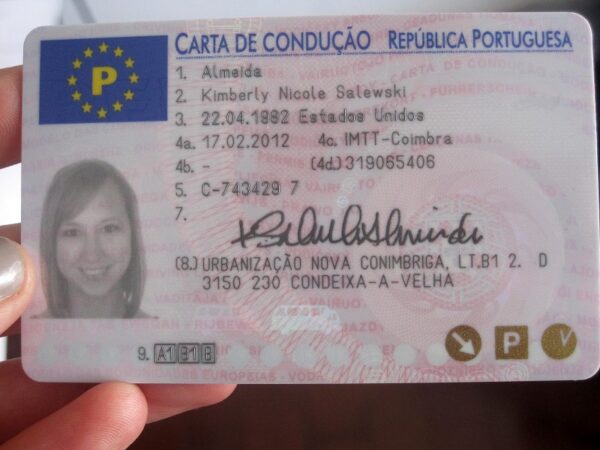20 Best Tweets Of All Time About Pass Driving Test

How to Pass Your Driving Test: A Comprehensive Guide
Passing the driving test is a substantial milestone for numerous individuals looking for self-reliance and movement. While it can be a complicated experience, appropriate preparation can greatly improve one's possibilities of success. This post supplies a helpful overview, providing useful suggestions, necessary understanding, and useful resources for anybody eager to conquer their driving assessment.
Understanding the Driving Test
The driving test usually consists of 2 main components: a written knowledge test and a practical driving assessment. Venda De Carta De Condução assesses a prospect's understanding of traffic laws, roadway indications, and safe driving practices. The dry run evaluates a prospect's ability to run a vehicle effectively and securely in real-world driving conditions.
Types of Driving Tests
| Test Type | Description |
|---|---|
| Written Test | A multiple-choice assessment on road guidelines and signs. |
| Vision Test | Evaluates the prospect's vision and ability to see road threats. |
| Dry run | An on-road examination of driving skills, including maneuvers and adherence to traffic laws. |
Getting ready for the Driving Test
1. Study the Rules of the Road
A thorough understanding of traffic laws is vital. Prospects ought to familiarize themselves with:
- Traffic signals and their significances
- Road indications and their implications
- Right-of-way rules
- Safe driving practices and protective driving methods
Resources:
- Driver's handbook from the local transportation authority
- Online driving course materials
2. Take a Driver Education Course
Enrolling in an official driving school can offer valuable instruction and practice. A qualified instructor can provide crucial insights into both written and practical parts of the driving test.
Advantages of Driver Education:
- Professional guidance and structured learning
- Access to practice vehicles equipped with dual controls
- Mock tests to simulate the driving test environment
3. Practice, Practice, Practice
Hands-on experience is vital for passing the practical driving test. Prospects ought to:
- Log a minimum variety of supervised driving hours
- Practice driving in varied conditions (e.g., highways, city areas, night driving)
- Refine essential abilities such as parallel parking, turning, and combining
4. Know the Test Route
Lots of driving inspectors use particular routes for testing. Acquainting oneself with potential test paths can ease anxiety and enhance confidence. Prospects need to drive these paths during practice sessions to identify tough areas.
Day of the Driving Test
As the test day approaches, candidates must be well-prepared to optimize their performance.
1. Car Readiness
Make sure the lorry remains in exceptional condition. Check the following:
- Tire pressure and tread depth
- Fluid levels (oil, brake, windshield wiper)
- Functionality of lights and signals
- Tidiness of the car (inside and out)
2. Show up Early
Getting to the testing site ahead of time allows candidates to relax and mentally prepare. Hurrying can introduce unnecessary tension that may impact efficiency.
3. Stay Calm and Focused
It's natural to feel worried, however remaining calm is essential. Candidates can use methods such as deep breathing workouts or visualization techniques to manage anxiety.
Typical Mistakes to Avoid
Understanding typical risks can assist candidates avoid errors throughout the examination.
- Failing to Observe: Neglecting to examine mirrors or blind spots.
- Speeding: Not preserving suitable speed limits.
- Incorrect Use of Signals: Failing to indicate when altering lanes or turning.
- Worried Behavior: Overreacting to inspector instructions or unexpected situations.
Frequently Asked Questions (FAQs)
Q1: How long does the driving test take?
A1: The practical driving test normally lasts in between 20-40 minutes, while the written test might take around 30 minutes, depending on the area.
Q2: What should I bring to the driving test?
A2: Bring important documents such as your student's permit, proof of identity, a roadworthy vehicle, and any required fees.
Q3: Can I take the test in an automated automobile?
A3: Yes, candidates can take the test in an automated car, but they may be limited from driving manual lorries unless they pass the manual test.
Q4: What occurs if I stop working the driving test?
A4: If a candidate stops working the test, they can usually reapply for the next readily available test date after a defined waiting duration, typically a couple of days to weeks.
Passing the driving test needs a combination of knowledge, ability, preparation, and composure. With persistent research study, practice, and understanding of the testing format, prospects can significantly increase their probability of success. For that reason, approach the driving test as both an obstacle and a chance for development, and with the right tools and state of mind, passing the examination will soon become a truth.

